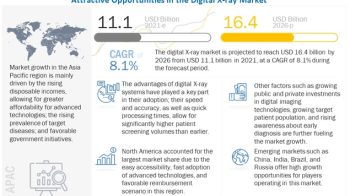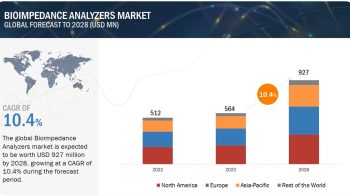
Introduction
In recent years, biopharmaceutical companies and research institutions have been increasingly adopting single-use bioprocessing technologies due to their numerous advantages over traditional stainless-steel systems. Single-use bioprocessing involves the use of disposable components, such as bioreactors, filters, and tubing, which significantly simplifies the production process and reduces the risk of cross-contamination. This article delves into the single-use bioprocessing market, exploring its current landscape, key components, applications, market drivers, challenges, and future prospects.
“Single use Bioprocessing Market Size, Growth by Product (Media Bags and containers, Bioreactors, Mixers, Assemblies), Application (Cell Culture, Mixing, Storage, Filtration, Purification), End User (Biopharma Companies, CROs, CMOs) – Global Forecast 2026″, is projected to reach USD 20.8 billion by 2026, at a CAGR of 20.5%.
Understanding Single-Use Bioprocessing
Definition and Overview
Single-use bioprocessing refers to the implementation of disposable equipment and systems in biopharmaceutical manufacturing. Unlike traditional stainless-steel systems, which require extensive cleaning and validation between batches, single-use technologies eliminate the need for cleaning, sterilization, and cross-contamination concerns. The components used in single-use bioprocessing are made of biocompatible materials, ensuring product integrity and safety.
Download a PDF Brochure: https://www.marketsandmarkets.com/pdfdownloadNew.asp?id=231651297
Advantages and Limitations
Advantages
- Reduced Cross-Contamination: Disposable components prevent the risk of cross-contamination between batches, ensuring the production of pure and consistent biologics.
- Cost-Effectiveness: Single-use systems require lower initial investment and operating costs compared to stainless-steel systems, making them more accessible to smaller companies and research institutions.
- Flexibility and Scalability: Single-use bioprocessing allows for easy scale-up or scale-down of production, providing flexibility to meet varying demand levels.
- Faster Turnaround Times: With reduced cleaning and validation processes, single-use systems enable faster production turnaround times, accelerating time-to-market for biopharmaceuticals.
Limitations
- Environmental Concerns: The use of disposable plastic components raises environmental sustainability concerns. However, advancements in biodegradable materials are addressing this limitation.
- Leachables and Extractables: There are concerns about the release of leachable substances from plastic materials into the bioprocess, potentially affecting product quality. Rigorous testing and regulatory guidelines are in place to address this issue.
Market Overview
Current Landscape of Bioprocessing
The biopharmaceutical industry has experienced remarkable growth in recent years, with a significant shift towards biologics and personalized medicines. As a result, there is a growing need for efficient and flexible bioprocessing technologies to meet the demand for these complex therapies.
Growth and Market Trends
The single-use bioprocessing market has been witnessing robust growth due to the increasing adoption of biologics, the rising demand for personalized medicine, and advancements in cell and gene therapies. The market is expected to continue expanding as biopharmaceutical companies recognize the benefits of single-use systems.
Key Components of Single-Use Bioprocessing
Single-use bioprocessing systems consist of several crucial components that facilitate the production of biopharmaceuticals.
Bioreactors
Bioreactors are essential vessels where cells or microorganisms grow and carry out the bioprocessing reactions. Single-use bioreactors come in various sizes and designs to accommodate different production scales.
Mixing Systems
Proper mixing is vital to ensure uniform distribution of nutrients and gases within the bioreactor. Single-use mixing systems offer efficient and reliable mixing solutions, enhancing process consistency.
Filtration Systems
Filtration plays a crucial role in the purification of biopharmaceutical products. Single-use filtration systems remove impurities and particles, ensuring product safety and quality.
Tubing and Connectors
The tubing and connectors in single-use bioprocessing systems facilitate the transfer of fluids between different components, providing a closed and sterile fluid path.
Sensors and Probes
Sensors and probes monitor critical process parameters such as temperature, pH, dissolved oxygen, and agitation speed, ensuring precise control of the bioprocessing conditions.
Applications of Single-Use Bioprocessing
Single-use bioprocessing finds application in various biopharmaceutical production processes.
Vaccine Production
The production of vaccines involves the cultivation of viruses or attenuated bacteria. Single-use bioreactors and filtration systems are widely used for vaccine production, enabling faster and safer manufacturing.
Monoclonal Antibody Production
Monoclonal antibodies are essential in the treatment of various diseases, including cancer and autoimmune disorders. Single-use bioprocessing offers a cost-effective and agile solution for the production of monoclonal antibodies.
Gene Therapy
Gene therapy involves the introduction of genetic material into a patient’s cells to treat genetic disorders. Single-use bioprocessing plays a vital role in scaling up viral vector production for gene therapies.
Stem Cell Research
Stem cells hold tremendous potential in regenerative medicine. Single-use bioprocessing systems allow researchers to cultivate and expand stem cells in a controlled and sterile environment.
Advancements and Innovations
Automation and Integration
The integration of automation in single-use bioprocessing systems enhances process control, reduces manual intervention, and improves data monitoring and analysis.
Continuous Bioprocessing
Continuous bioprocessing is gaining traction in the industry due to its advantages in productivity, efficiency, and cost savings over traditional batch processes.
Closed-System Solutions
Closed-system solutions further minimize the risk of contamination and product loss, ensuring the integrity of the bioprocessing environment.
Market Drivers and Challenges
Increasing Demand for Biologics
The rising prevalence of chronic diseases and the demand for personalized medicine are driving the growth of biologics, subsequently boosting the single-use bioprocessing market.
Cost-Effectiveness and Sustainability
The cost-effectiveness and reduced resource consumption associated with single-use systems are attractive to both large pharmaceutical companies and emerging biotech startups.
Regulatory Considerations
Regulatory bodies play a significant role in ensuring the safety and quality of biopharmaceutical products. Complying with regulations is critical for market access.
Concerns About Leachables and Extractables
The release of leachable substances from plastic components into the bioprocess is a concern that requires rigorous testing and adherence to regulatory guidelines.
Market Segmentation
By Product Type
The single-use bioprocessing market can be segmented based on the type of products, including bioreactors, filtration systems, mixing systems, and sensors.
By End-User
The market caters to various end-users, including pharmaceutical and biotechnology companies, contract manufacturing organizations, and research institutions.
By Region
The single-use bioprocessing market has a global presence, with North America, Europe, and Asia-Pacific being the major regions for adoption and growth.
Major Players in the Single-Use Bioprocessing Market
Several key players dominate the single-use bioprocessing market, offering a wide range of innovative products and solutions.
The single-use bioprocessing market is highly consolidated with majority of the market share taken up by key players such as Thermo Fisher Scientific (US), Danaher Corporation (US), Sartorius Stedim Biotech S.A. (France), and Merck KGaA (Germany). The key players in this market are increasingly focusing on strategic expansions, partnerships, and product approvals to expand their manufacturing capabilities and increase market presence.
Sartorius Stedim Biotech held the leading position in the single-use bioprocessing market in 2020. Sartorius focuses on strengthening its position in the market by adopting organic and inorganic strategies such as product launches and expansions. During the past three years, Sartorius Stedim Biotech launched SUB systems such as BIOSTAT STR Generation 3 Single-Use Bioreactor, BIOSTAT RM TX Single-Use Bioreactor, and BIOSTAT STR. In 2019, Sartorius acquired Danaher’s Life Science portfolio, which is complementary to the portfolio of Sartorius’s laboratory and bioprocess business. In 2019, the company also expanded their operations in Puerto Rico.
Thermo Fisher Scientific is the second-largest player in the single-use bioprocessing market. Thermo Fisher Scientific operates in the single-use bioprocessing market through the life science solutions business segment. To further increase its share in the single-use bioprocessing market, the company focuses on growth strategies such as acquisitions and expansion. From 2019 to 2021, the company expanded its business in the US. The company also made investments worth ~USD 650 million from 2019 to 2021 to enhance their single-use bioprocessing capabilities and increase their market share.
Future Outlook and Opportunities
The single-use bioprocessing market is poised for significant growth in the coming years, driven by advancements in biotechnology, increasing adoption of personalized medicine, and ongoing efforts to improve process efficiency and sustainability. As technology continues to evolve, further innovations in single-use systems will likely shape the future of biopharmaceutical manufacturing.
Conclusion
Single-use bioprocessing has emerged as a transformative technology in the biopharmaceutical industry. Its numerous advantages, including cost-effectiveness, flexibility, and reduced cross-contamination risks, have made it a preferred choice for bioprocessing applications. While there are environmental and regulatory challenges to address, the continuous advancements and innovations in single-use bioprocessing present a promising future for the industry.
FAQs
What is single-use bioprocessing?
Single-use bioprocessing involves the use of disposable components in biopharmaceutical manufacturing, eliminating the need for cleaning and sterilization between batches.
What are the advantages of single-use bioprocessing?
Single-use bioprocessing offers reduced cross-contamination risks, cost-effectiveness, scalability, and faster production turnaround times.
What are the applications of single-use bioprocessing?
Single-use bioprocessing finds applications in vaccine production, monoclonal antibody production, gene therapy, and stem cell research.
What are the challenges in single-use bioprocessing?
Environmental concerns and concerns about leachables and extractables are among the challenges that single-use bioprocessing faces.
What is the future outlook for the single-use bioprocessing market?
The single-use bioprocessing market is expected to grow significantly due to the increasing demand for biologics and ongoing advancements in bioprocessing technology.

